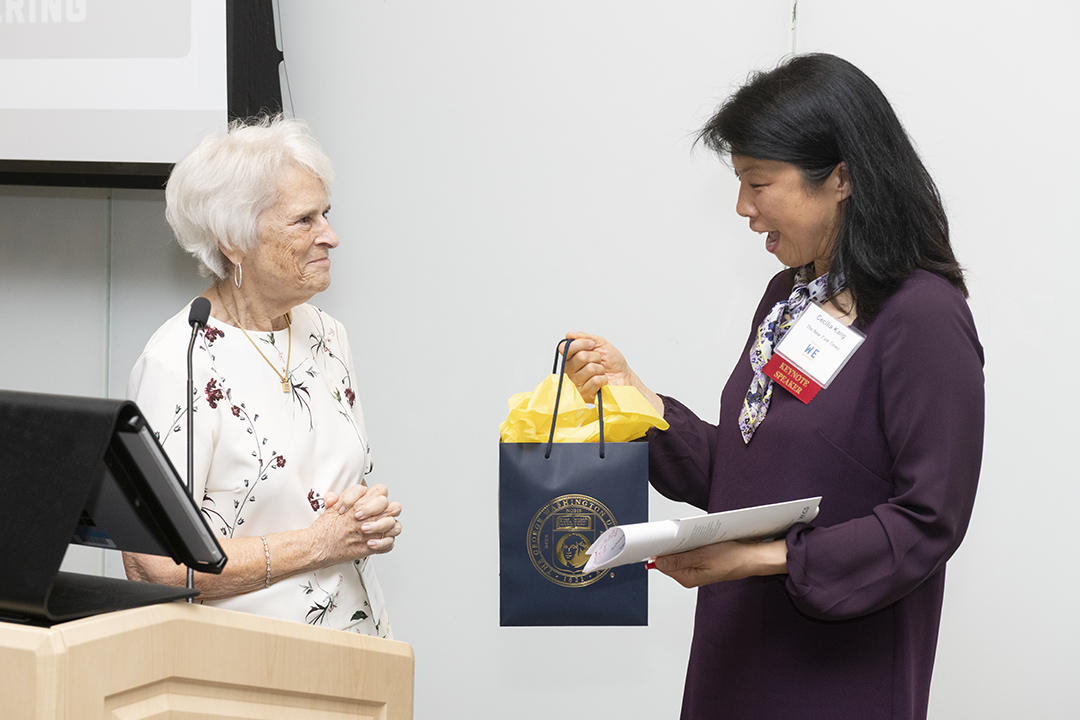By Tatyana Hopkins
As the world moves into a new wave of technology, it is crucial that women be involved in the design of up-and-coming digital innovations, said Cecilia Kang, a New York Times technology correspondent.
“[Artificial intelligence], block chain, driverless cars, smart cities, smart grids—all these things very much need the input and creation design input of the people that will be using these things,” Ms. Kang said.
She said technology tends to fail when there is a lack of diversity in its design and development, noting an instance when Google face-recognition software labeled African Americans as gorillas.
“There was something horribly wrong with this algorithm made by Google,” Ms. Kang said. “Google, mind you, has a percentage of African Americans [employees] in the single digits, that’s barely moved over the years.”
She said the inclusion of diverse people in the advancement of technology should have been “pretty obvious stuff” and Google and its users suffered a “horrible consequence of not having diversity.”
Ms. Kang spoke Friday at the George Washington University as the keynote speaker for the launch of the School of Engineering and Applied Science Center for Women in Engineering (WiE).
The center will serve as a hub for resources to help women reach their fullest potential as engineers.
“It is so painfully obvious that we need more women in STEM… and there has been this broad support, for decades, that this is a goal,” Ms. Kang said. “But, [this] can’t happen accidentally.”
She said there must be concerted efforts to make STEM a more inclusive field for women and that WiE was at the forefront of those efforts.
The center’s director, Rachelle Heller, called the new program “a milestone in the journey for women engineers as they make their way in the world.”
She said that women often face many barriers to the field and highlighted that only 19 women have been awarded a Nobel Prize in chemistry, physics or medicine since Marie Curie became the first woman to do so in 1903. She also noted that women only hold between 8 to 30 percent of teaching positions in engineering nationwide, receive smaller grants and often face large wage gaps.

Rachelle Heller (left) is the director of the newly launched SEA Center for Women in Engineering. (Photo: David Scavone)
“Such huge disparities, such deep inequality, doesn't happen by chance,” Dr. Heller said. “We need to address these challenges to provide these women with satisfying careers.”
She said higher education is a great place to create a pipeline to eradicate these disparities and that SEAS was poised to take addressing these disparities to the next level. This year, the school had an entering freshman first-year class that was 48 percent womene and a graduating class that is 42 percent women, compared to a national average of 20 percent, according to Dr. Heller.
She also noted that SEAS has a higher than average number of women faculty and is a leader in graduating Ph.D. degrees for women of color.
“Here at Foggy Bottom, in SEAS, we are situated at the heart of policy, professional and productive national leadership,” Dr. Heller said.
GW Provost Forrest Maltzman said successful academic programs are not “just based on having outstanding academics and top-notch facilities.”
“It’s no longer sufficient to simply attract the best and brightest to GW,” Dr. Maltzman said. “We must go beyond that to recruit and retain a diversity of people and talents, and this is key to our success as an institution. In order to successfully tackle the world’s greatest challenges, we need a student, faculty and staff population that reflects society and advances those with the greatest work ethic, grit and creativity.”
He called the work SEAS is doing with women in engineering “inspiring.”
“The SEAS Center for Women and Engineering is an important step and provides a conduit and platform to address many of the hurdles women face and ensures all students, faculty and staff are supported,” Dr. Maltzman said. “The center is an excellent role model for the rest of the university and even the nation to address these challenges.”





